American Samoa and Buses
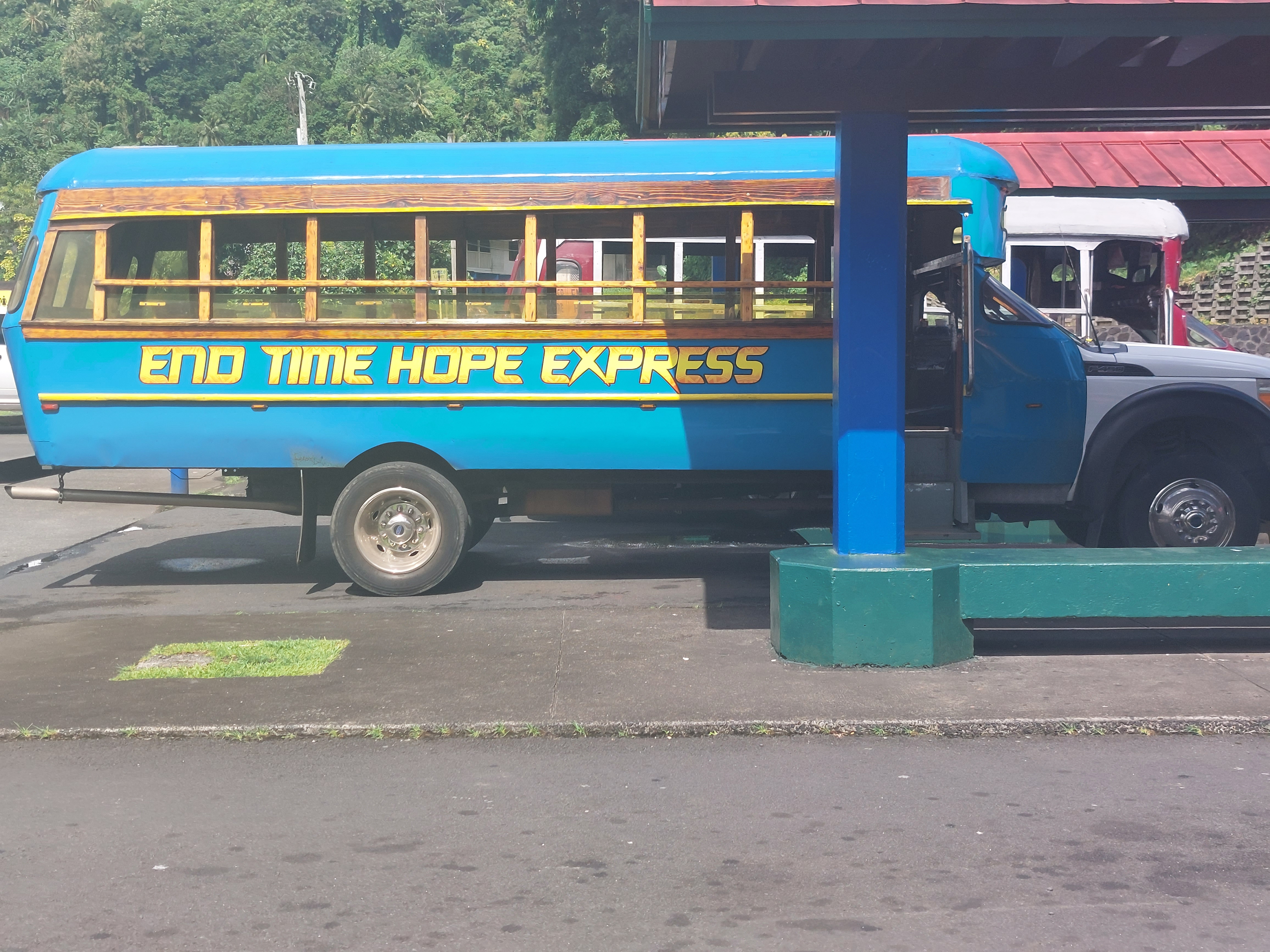
At 8am on July 30 we manoeuvred Mandolyn towards the industrial dock in Pago Pago Harbour, American Samoa, to meet with customs and immigration. Sarah and I were a little tired after 4 nights at sea. The harbourmaster met us on the dock to help with our lines. He was soon joined by another official, and then… eleven more. Thirteen people total.
For perspective, a football team only fields eleven players. Now we were feeling awake.
Despite intimidating numbers, the atmosphere was light with lots of joking around in Samoan. One official came aboard Mandolyn for an inspection. In our conversation I mentioned that our last stop at Suwarrow Island had only two customs people. He raised his eyebrows in disbelief. Once he confirmed this, he burst out laughing, then shouted this news to the larger group, who also erupted in laughter. We were cleared through customs and welcomed to the country. This was a nice first impression.
So what exactly is American Samoa? Well it’s an unincorporated self governing US territory. It’s population are considered non-citizen nationals of the United States. The primary language is Samoan, but many people speak perfect English. They have McDonalds, US post offices, and Amazon delivery. They play baseball and American football, and have the highest per capita military enlistment of any US state or territory.

The church is a powerful influence here, which can be observed in the national sense of modesty. It’s the custom that knees and shoulders remain covered, especially on women, even when swimming.
I thought this was a bit silly. Surely knees and shoulders were meant to be free? Knees need the breeze! I was sitting in our cockpit one morning smugly contemplating my superior sense of modesty, when the European gentleman anchored next to us came onto his deck stark naked to unabashedly urinate into the bay. Facing us. Well… that’s taking it a bit far. I mean… sure, knees need the breeze, but do balls need the squalls? Why do I find this off-putting? Is it possible my superior sense of modesty is just an arbitrary product of my upbringing?
“I can see your knees Sir! Your knees are exposed!”
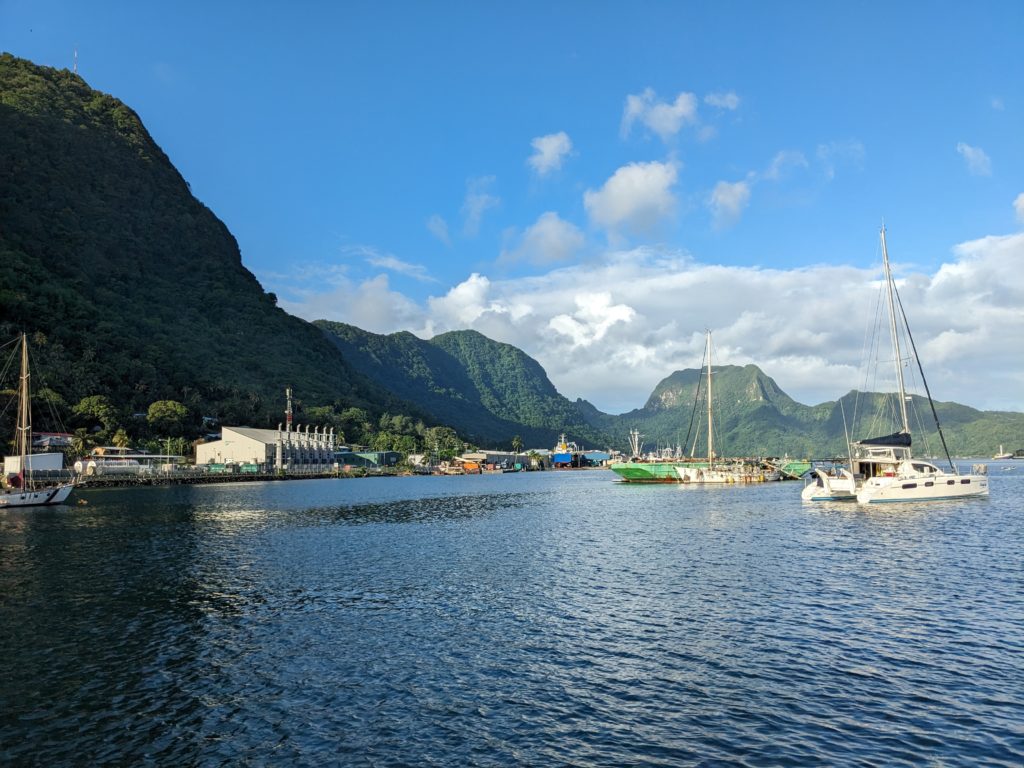
As we started to explore the nearby villages, we saw several painted gas cylinders, hung to be used as bells.
These are used as tsunami alarms, as well as to announce the daily prayer curfew at 6pm. The curfew is a 15 minute period each day devoted to quiet prayer and meditation. You are discouraged from being active outdoors during this period. Many villages also enforce a 10pm curfew for young people.

On one occasion we were trying to catch a bus home around 5:45pm, and starting to feel nervous about the approaching curfew. A pickup drove past, then looped back around to offer us a ride. This turned out to be a local village chief who had correctly identified us as ignorant tourists. He explained there likely wouldn’t be another bus, and gave us a ride home, stopping along the way to point out his office, in case we ever needed any help with anything.
He also explained the local system of land ownership, which we found pretty interesting. There is no private land ownership here. All land is communal, and managed by the councils of each village. If you want to move, or build a house, you speak to the councils to work something out. If you’re an outsider, you might need to offer some value to the “family”. He seemed to use the words family and community interchangeably, the communities being quite tight knit.
Many homes here have elaborate graves and sarcophagus-like monuments in their yards, which gives the impression that houses tend to stay in a family long term.
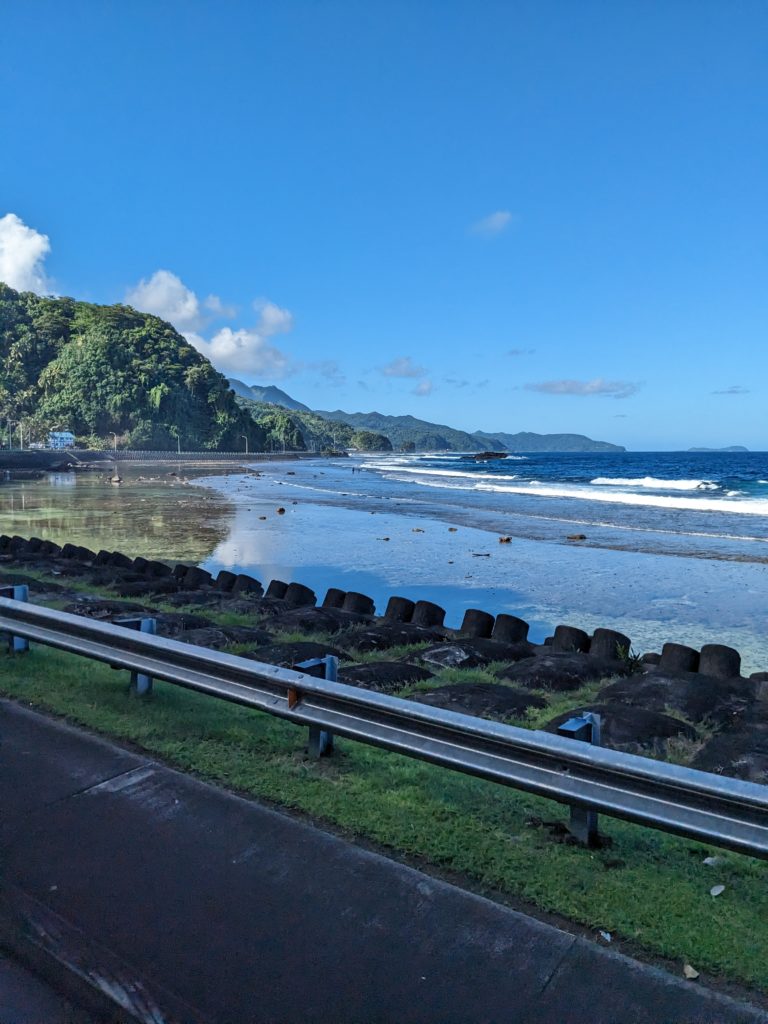
One day we decided to explore the island by bus, with an Australian family from the boat Atmospheric. The eight of us were the only people to board the bus at the station. Shortly after departing, the driver made a phone call, speaking in Samoan, then took the bus out of service. Despite being mostly empty, he took down the destination sign and drove right past other waiting passengers. Interesting. Maybe we can tick “kidnapped” off our bucket list? A little later he stopped for a woman and child, and the woman was eager to speak to us. “The driver is my husband”, she explained, “he called me and told me he had a load of palangis (white people). I told him: ‘I want to see! Come pick me up!’”.

This was pretty funny, it’s not as if we’re the only white people in the country, but outsiders are rare as there’s virtually no tourist industry. When we got to the end of the line this woman asked to take our photo with the bus, and then insisted they would wait for us as we explored for an hour, to also drive us back home. They were able to answer all of our questions about the bus system, which we also found fascinating.

The buses here are all converted pickup trucks, usually three or four tonne. The trucks are shipped from the United States, at a cost of around $5000USD. This cost is mitigated by stuffing them full of other cargo. Then a carpenter is hired who does the bus conversion. The whole passenger area is made of wood, with a painted canvas on the roof for waterproofing.
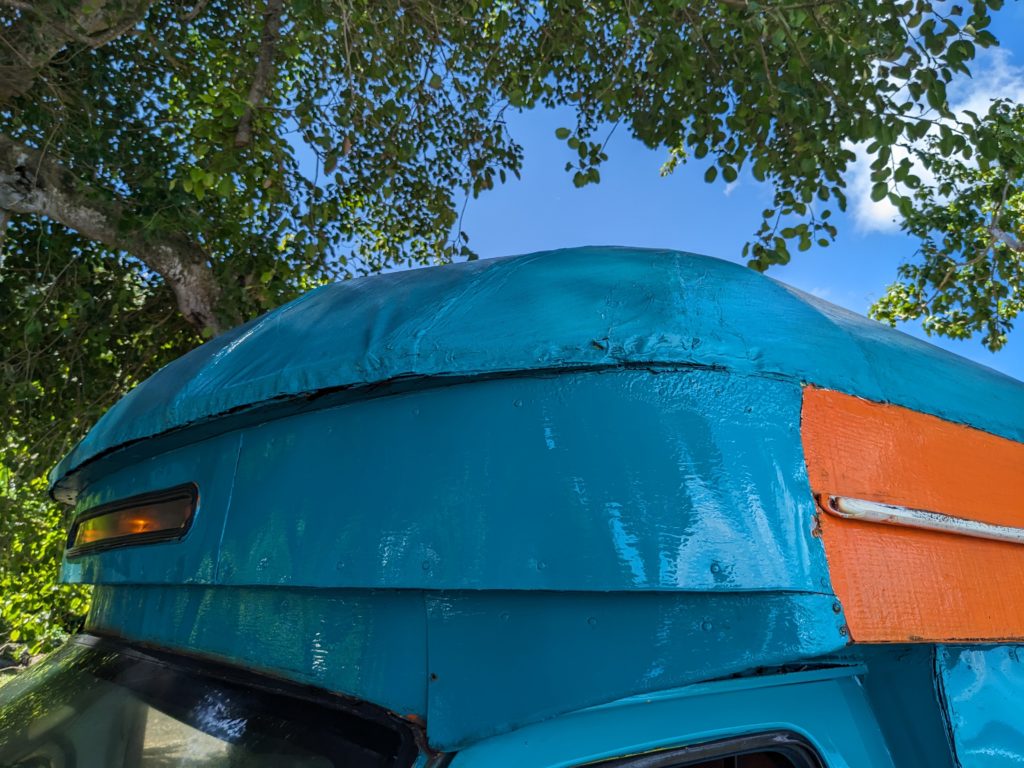


Every owner customizes their bus to suit their own tastes. A lot of faux fur in the dash area is a popular upgrade. Huge speakers pumping loud music are mandatory. There is no central authority managing schedules, so bus owners choose their own routes and keep any profits. It’s a chaotic system, but it seems to work, we loved riding the buses around, butts vibrating to the bass.


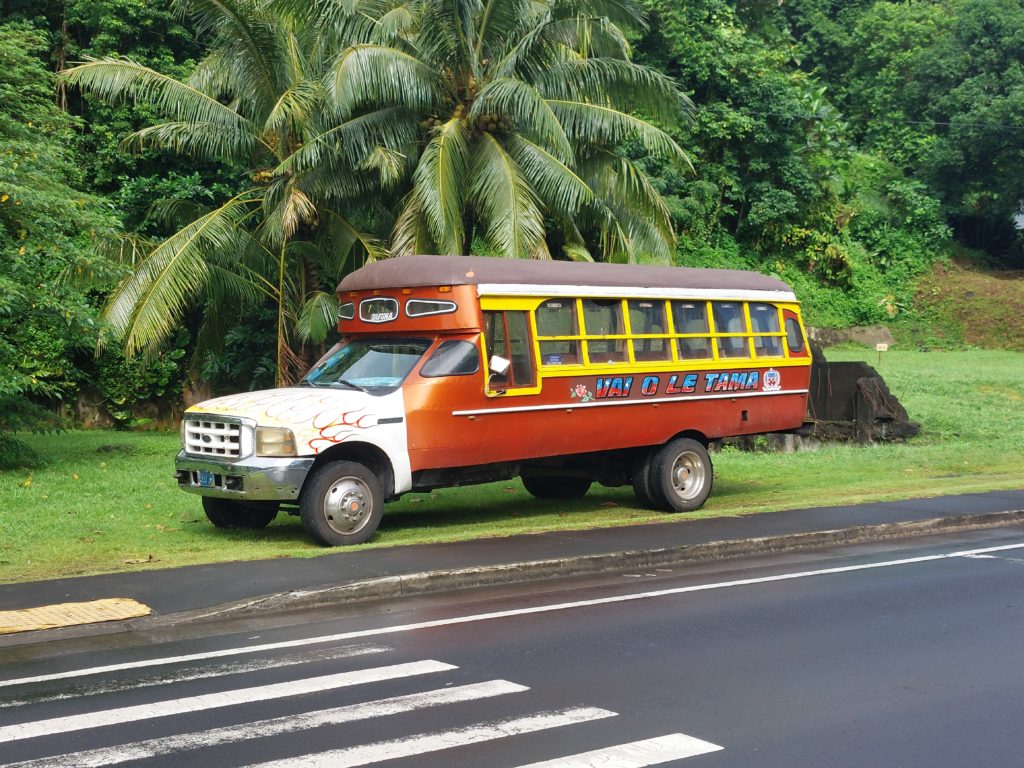
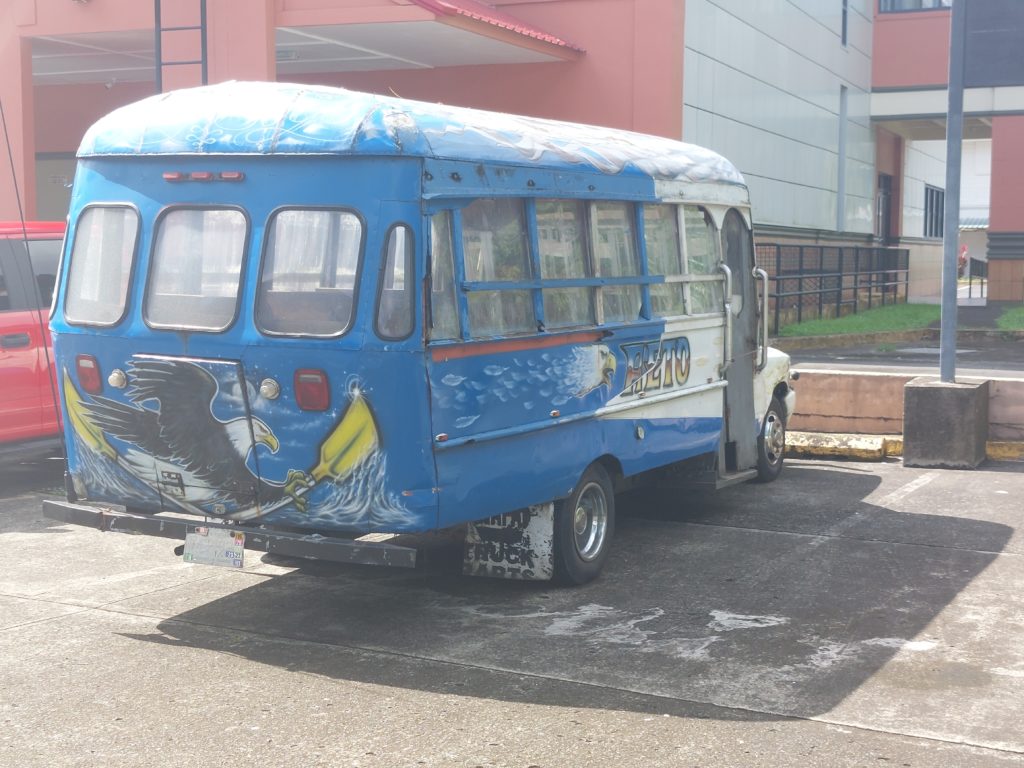
We hadn’t originally intended on stopping in American Samoa. The reviews from other boaters aren’t always favourable. The main anchorage is the industrial harbour of Pago Pago. A large tuna processing facility can generate some exciting smells when the wind is right. The water in the bay is polluted, and if you are still considering a swim, there are reported to be tiger sharks here too. Despite this, the island is beautiful and the people are amazing. Total strangers would regularly go out of their way to offer help or to say hello. We’ve never been in a culture that was so proactively friendly. We’re really glad we came.
We enjoyed American Samoa so much that we now want to see them all. Next stop: Samoan Samoa (a.k.a. Western Samoa, a.k.a. Samoa).
And some random photos …
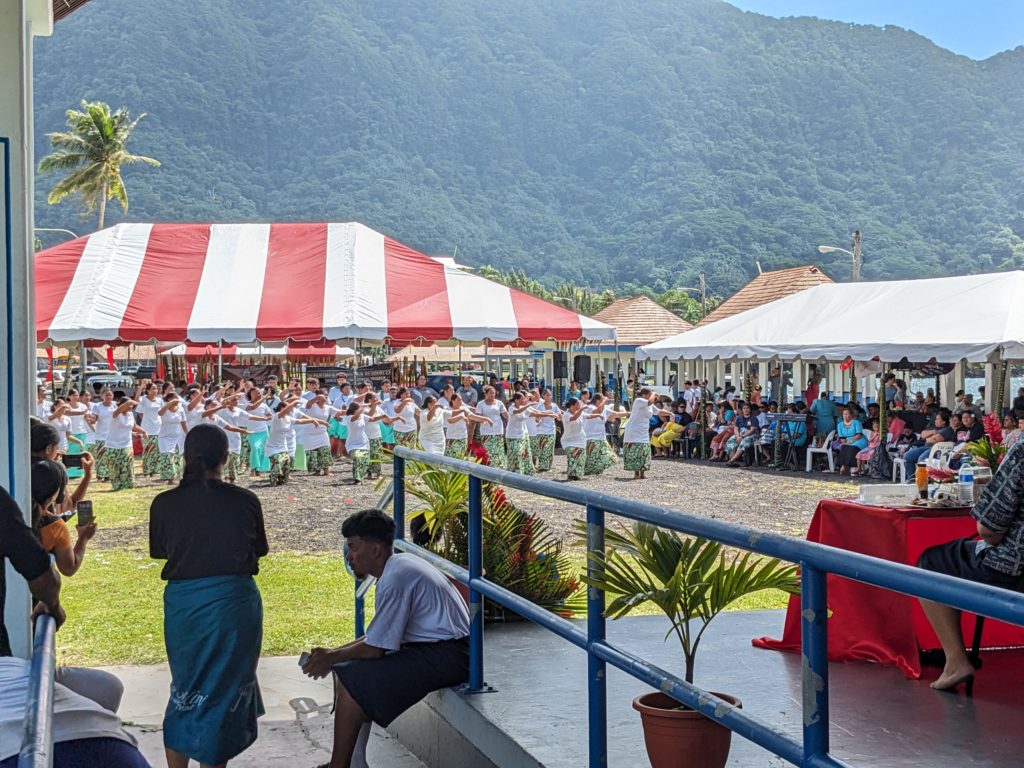
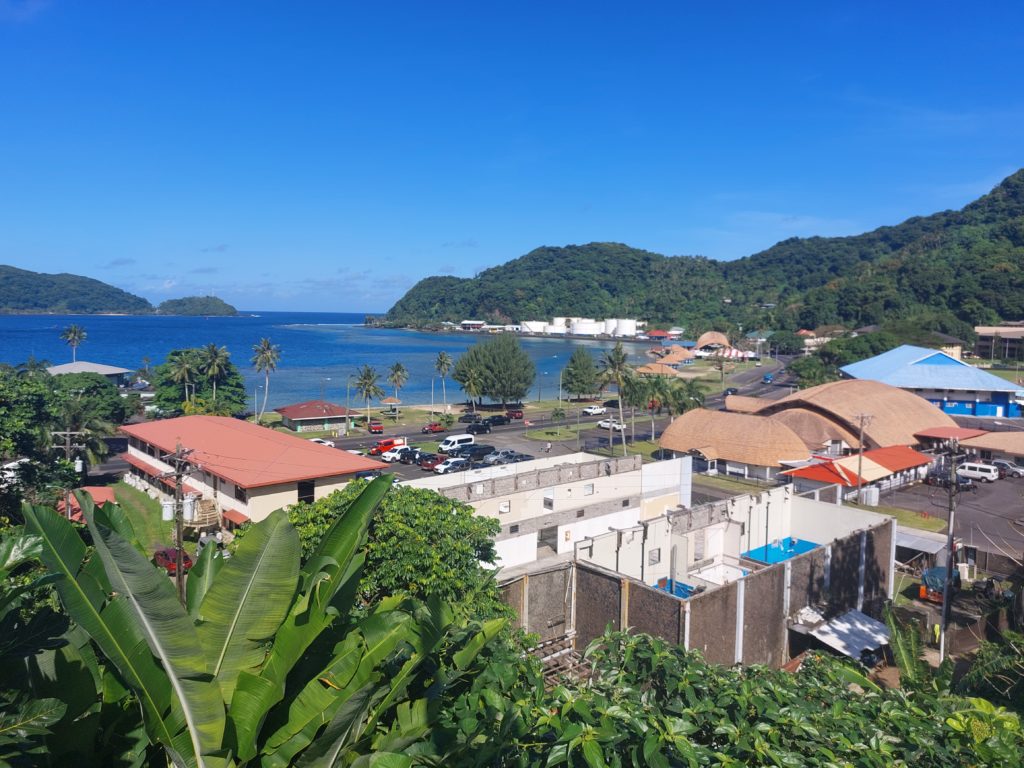
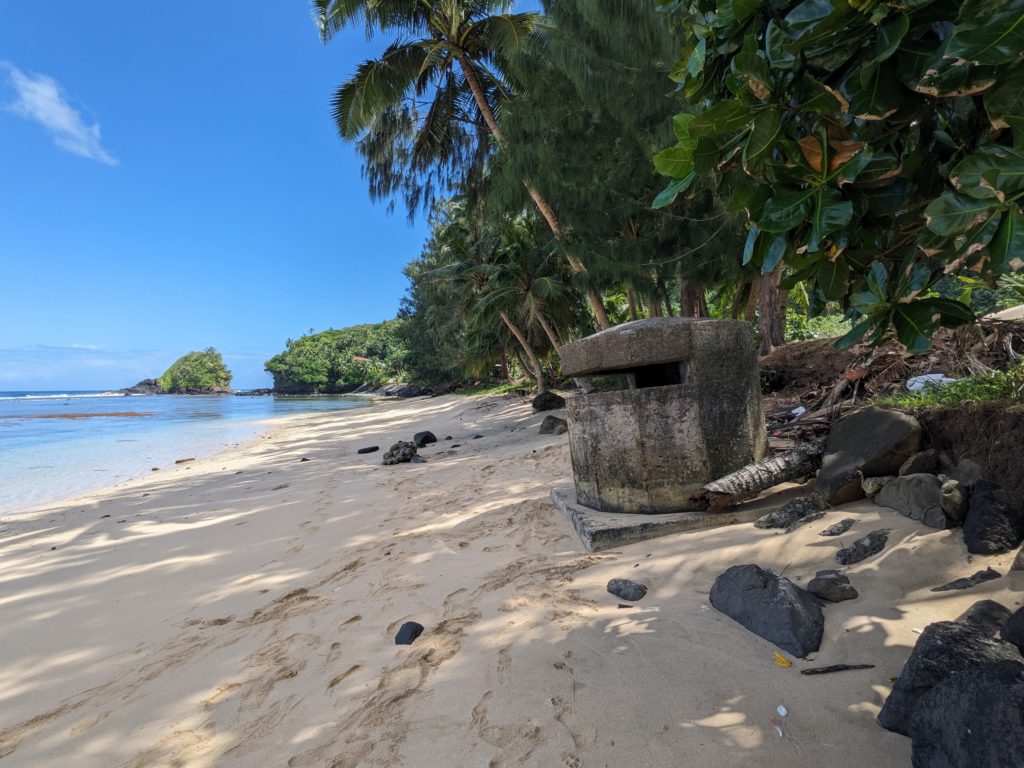
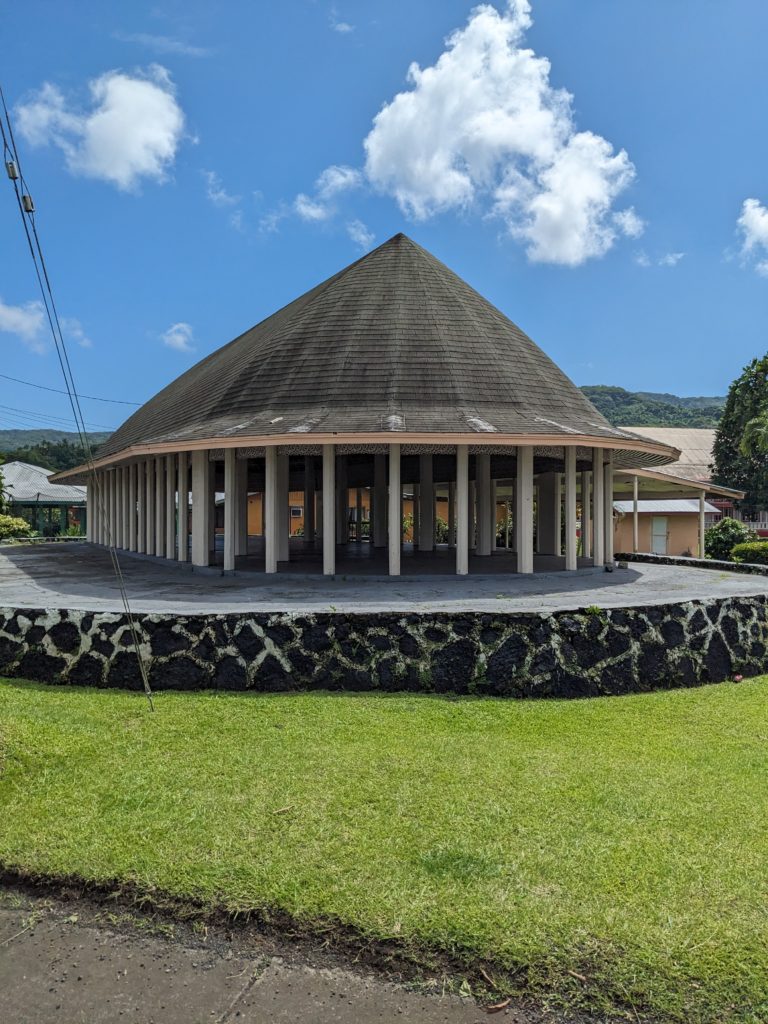
4 thoughts on “American Samoa and Buses”
Wow…sounds like such an interesting and friendly place. Looking forward to hear about the next island.
Very interesting place – so off the beaten track!
Add some food info please! Love all the photos as well.
Great post Doug. I didn’t realize you guys kept a blog. I actually want to go to American Samoa, despite the smelly port. Hopefully you guys are doing awesome!
Great update Doug!! I had little to no knowledge of what American Samoa was all about so now, after reading this, I feel well educated! 🙂
I found the buses particularly intriguing so loved the detail you showed in the pictures – quite amazing really!
Looking forward to your next blog and also love reading the updates on Predict Wind!
We are in a heatwave back on the island here… Summers are definitely getting hotter here!
Fair winds!
Richard
Comments are closed.